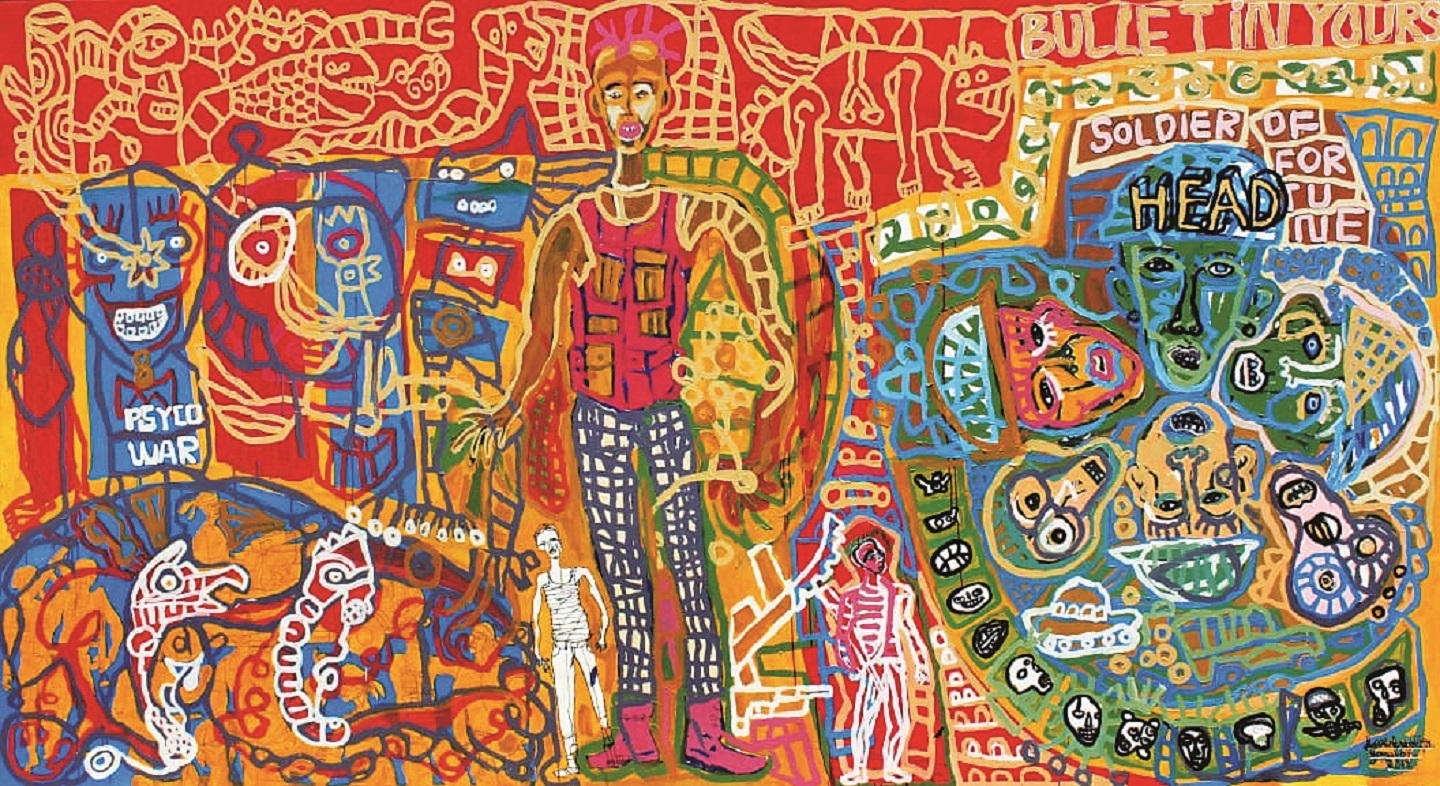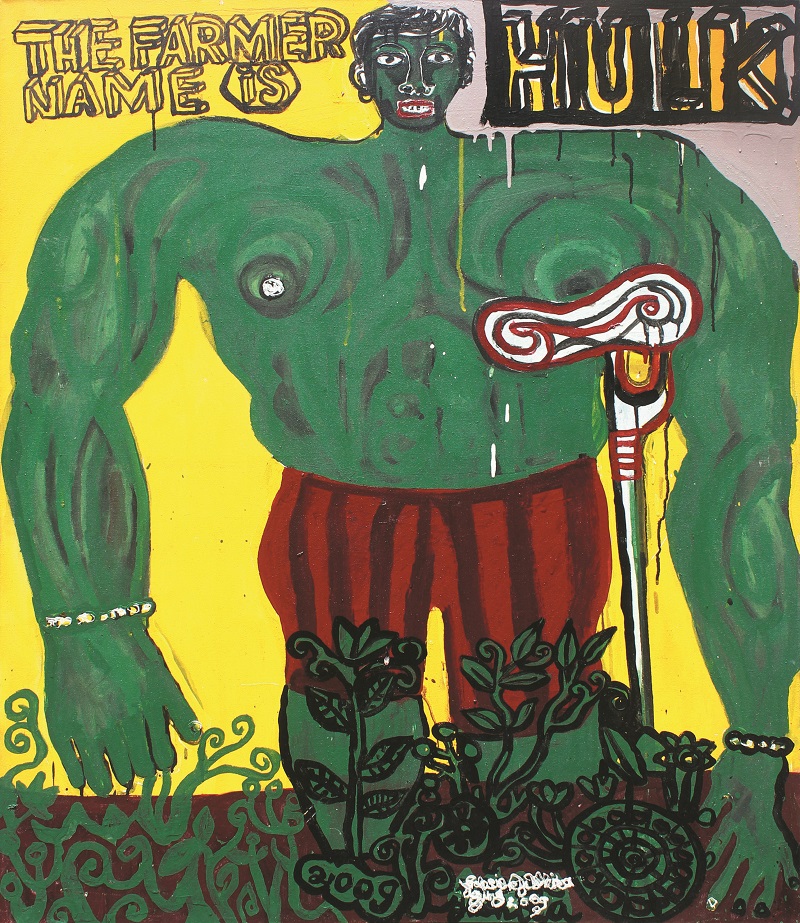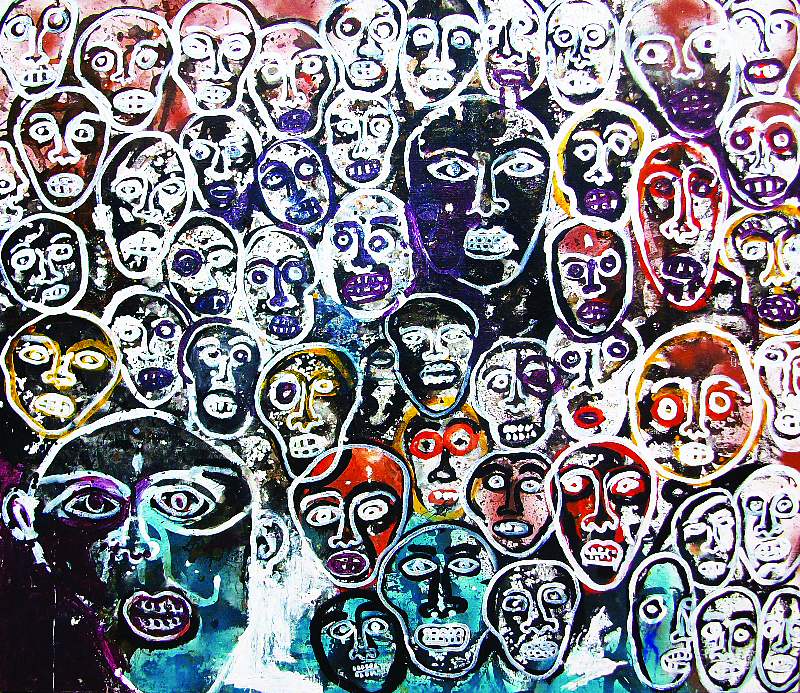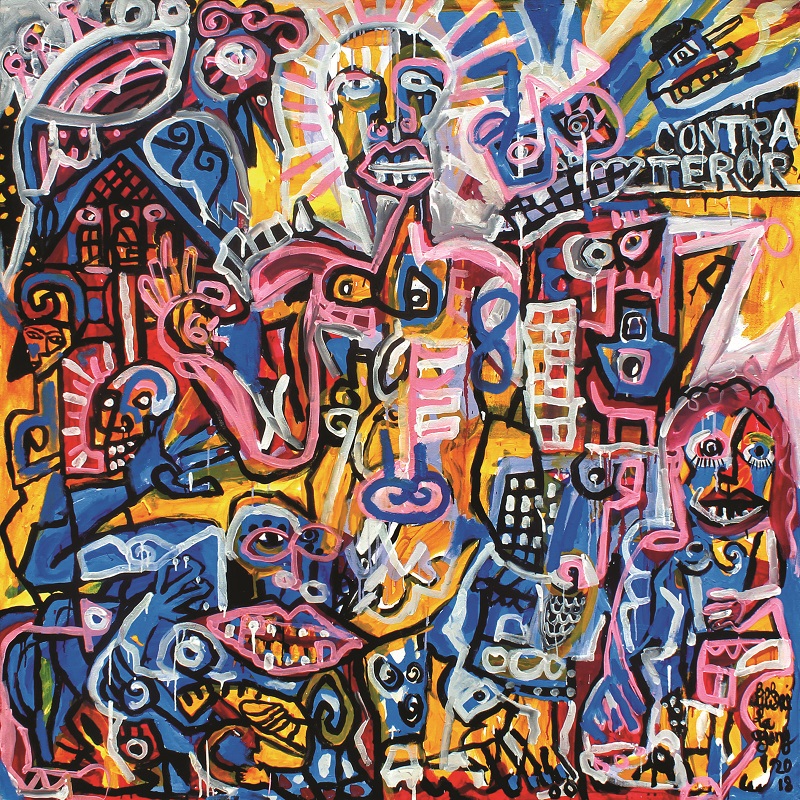
Bullet in My Head (2012) is one of the many gripping artworks by Bob Yudhita Agung (All photos: Vallette Gallery)
In 2013, French entrepreneur and art curator Patrice Vallette opened a gallery in Kuala Lumpur. Located in Jalan Bruas in Damansara Heights, he held exhibitions by local and international artists, including Rafiee Ghani, Lim Kim Hai, Faizal Suhif and Raed Bawayah. Subsequently, he moved the gallery to The Row at Jalan Doraisamy, before he decided to close shop and take a break from the Malaysian art scene for about a year to pursue curatorial projects overseas, including a travelling exhibition and the publication of a book on Turkish-Armenian photographer Ara Güler.
Now, Vallette Gallery has reopened its doors, this time in a spacious bungalow in Taman Tunku, KL. Vallette says he is ready to “come home”, adding with a smile that despite invitations and suggestions to open his gallery in Singapore or Bangkok, where the art scene is currently abuzz with its recent biennale, he is still drawn to KL, particularly the green, quiet and suburban side of it.

The break has given him space to regroup and rethink the focus of his gallery, which he says will now mix in more established artists with the emerging ones he has been presenting, with plans to cast the gallery’s net wider, beyond the shores of Malaysia, more often.
On that note, Vallette has chosen to present Indonesian artist Bob Yudhita Agung’s first solo exhibition in Malaysia as a comeback show, showcasing nine relatively large-scale works produced between 2008 and 2018.
The word “legendary” often precedes any mention of the tattoo-covered Yogyakarta-based painter, whose long-time nickname itself, Bob Sick — though he apparently no longer goes by that name — conjures up a devil-may-care persona that more often than not has been a true reflection of his lifestyle.
Part of the celebrated Taring Padi Yogyakarta arts collective that emerged out of the Institut Seni Indonesia in the 1990s, Bob’s student days were defined by activism (against the Suharto regime), the rock ‘n’ roll lifestyle, complete with a band that was notoriously unmusical, and drugs. The last would lead to a crippling addiction that has taken a toll on his life and career.
Co-curator Sarah N H Vogeler writes in the exhibition statement, “There are artists, and then there are artists — Bob is the latter”. Vallette says he does not regard Bob as a black sheep, even if it may be fair to say he is one based on his lifestyle and how he looks. “But he is also a humanist,” Vallette says.
“What I like about his works is that they are provocative, but done without provocation. It is not intended to be so, though it comes through from him trying to express himself — how he thinks, how he communicates … there is a lot of intensity and energy, but also a lot of concern over what is going on around him. At the same time, there is a sense of resilience,” says the gallery owner.

Inevitably drawing comparisons with Jean-Michel Basquiat for their similar styles of expression, there is a raw and visceral quality that sets these artists apart, a seemingly spontaneous and uncontrolled creative process that is almost trance-like.
Indeed, Vallette shares that Bob is known to work for long stretches of time without stopping for food or drink. “It is almost as if he can work without thinking,” he observes, agreeing that this form of art is not intellectual or academic in the traditional sense.
“If you have never seen Bob Sick’s work before, it is strong and sometimes disturbing. But we do not know where this disturbance is coming from, so it is interesting. And even if you do not know anything about him or his art, you are attracted to keep looking — be it at the symbols or the energy of the colours. For me, there is a down-to-earth and humanistic element, and I know he is someone who values relationships despite his lifestyle — he is not totally disconnected,” Vallette says.
A walk around the space is an immersion into the visual language of an artist who stands uniquely on his own. At once bright and intense, yet torturous and dark just under the surface, the collective onslaught on the senses can be equated, perhaps, to the canvas that is his body — overwhelming. Yet, once the kaleidoscope of garbled strokes and images begins to settle, singular emotions and ideas begin to emerge as one takes in one artwork at a time — or even a part of an artwork in bite-sized portions if necessary.
The easiest to start with is The Farmer Name is Hulk (2009), the exhibition’s poster work and the smallest piece in the exhibition. The simplicity of the allusion — the grass roots farmer to a powerful superhero — reveals a glimpse into what concerns the artist.
If that work offers a sense of being childlike, then his latest work in the exhibition, Contra Teror (2018), is the extreme opposite. Packed with motifs and symbolism, the beautiful chaos of its visuals present Bob at his most sublime, in the choice of bright hues and arresting energy.

For an artist who seems to have lived a maximalist life, Bob’s works collectively speak of a haunting of the soul in one way or another — be it in response to the war and violence around us or more introspectively, as in Seni Muka (2011).
The question remains, what makes an artist like Bob and his works valuable? Even the art market cannot seem to decide, with Bob’s works selling at skyrocketing highs, followed by a huge drop when collectors seem to have stopped buying.
Vallette understands the risk he is taking but he says the history and foundation of an artist never lies — and Bob certainly has that pedigree, having been nurtured and grown within Jogja’s art ecosystem. Citing the example of Damien Hirst, whose works have also undergone a massive readjustment in the last few years, he says that in the end, for any artwork, it comes back to the artist.
“What made him create, the why and the how — here is an artist for whom painting is life, and life is painting. His life and his experiences also colour his work. It may not be academic, but it has a definite narrative and a form of intellectualism of its own. His story is perhaps the most compelling factor for his collectors.”
'Sick — An Exploration of the Human Condition', 14 Jalan Langgak Tunku, Taman Tunku, KL. 019 301 2569. Until May 13. Mon-Fri,10am-5pm; Sat, 11am-4pm.
This article first appeared on May 6, 2019 in The Edge Malaysia.


